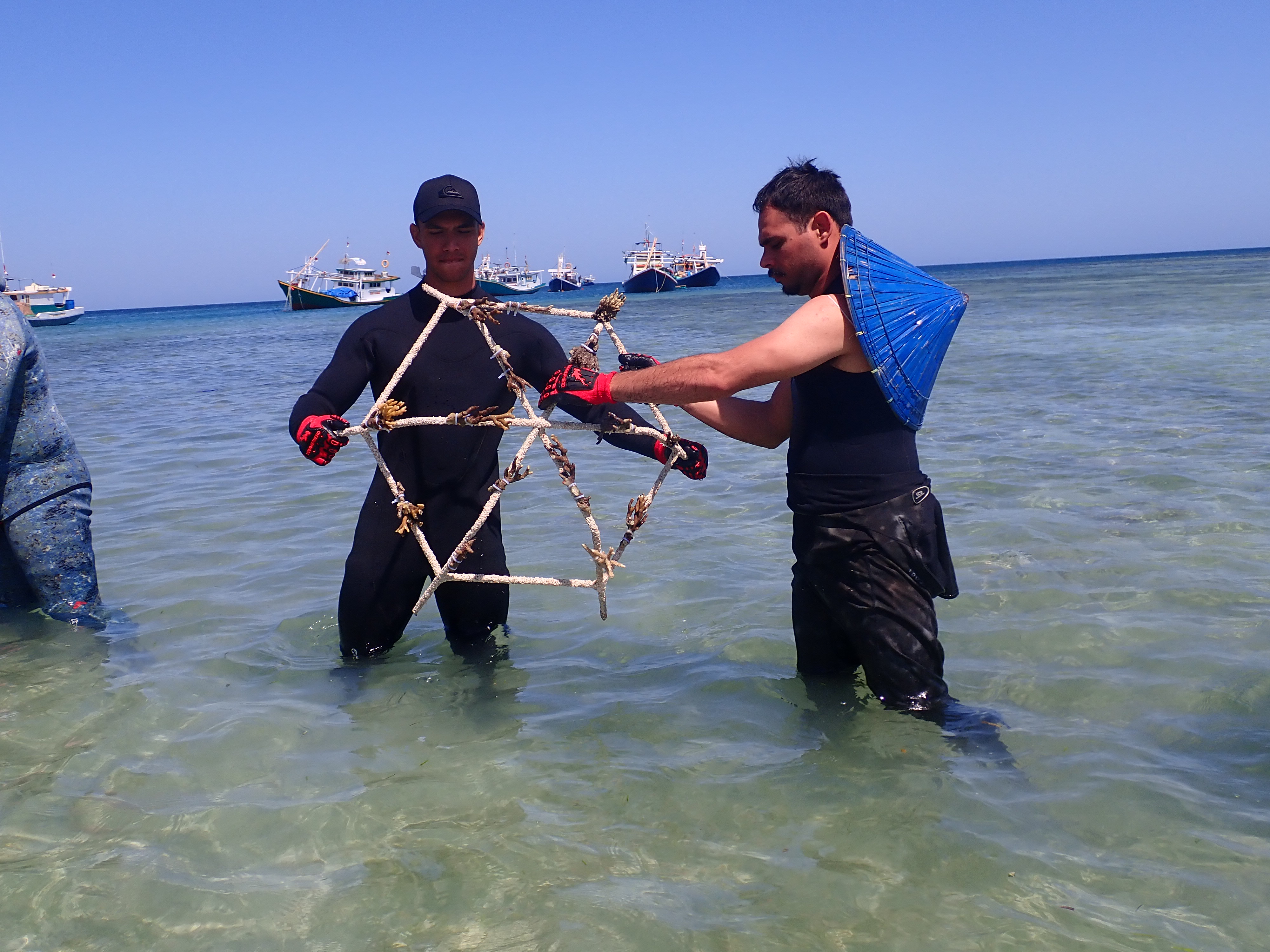Yirrganydji Rangers restore coral reefs


Aims and overview
The coral reefs in Yirrganydji sea Country are culturally significant to Yirrganydji people. These coral reef systems are part of Yirrganydji identity, heritage, and livelihood activities. However, the reef is under stress from different pressures including poor water quality, Crown-of-Thorns starfish, cyclone damage and coral bleaching.
The reef restoration and monitoring project is designed to address some of these pressures, as well as contribute to the long-term sustainability of Yirrganydji reef and cultural places. Project locations include Hastings, Saxon, Norman and Moore reefs.
A team of five Yirrganydji rangers and Dawul Wuru Aboriginal Corporation staff worked on this project, which involved coral spawning collection, transfer of coral larvae from Moore Reef to Hastings Reef, and installation of ‘reef stars’ (reef stars are hexagonal structures that stabilise loose rubble and provide a platform on which corals can grow) at Hastings Reef to enhance reef resilience from cyclone damage. The team has also been involved in the Great Barrier Reef Census monitoring.
The project is being delivered through partnerships with Citizens of the Great Barrier Reef, Great Barrier Reef Biology (Experience Co), James Cook University TropWater, GBR Biology, and Mars Australia.
Activities and outcomes
This is a unique project that brings together expertise from different sectors and partners for local scale reef monitoring and restoration on the Great Barrier Reef.
The project has enabled continuity of connection to Yirrganydji sea Country. Five Yirrganydji people in the project team had physical and spiritual contact with cultural places such as Hastings, Saxon and Norman reefs, which allowed them to develop a better understanding and awareness of these cultural places on the sea and reef within Yirrganydji Country.
There have also been conservation and stewardship outcomes from activities, such as coral larvae re-seeding and ‘reef star’ restoration using coral fragments. There are not many Traditional Owner groups involved in reef monitoring and restoration work to the extent that Yirrganydji are, which highlights the uniqueness of the project and its contribution to Queensland’s and Australia's targets for the Reef 2050 Plan.
Professional development and capacity building for rangers and staff is another important outcome of the project. Rangers and staff gained knowledge and experience from working with different partners involved in tourism marine science research, reef restoration expertise, and media communications.
Collaboration with partners has also led to employment opportunities, engagement with high profile ambassadors (Xavier Rudd, King Sting Ray) and creation of the ‘Reef Shot’ documentary streaming on STAN, which showcases our conservation efforts on the Great Barrier Reef.
Learnings and next steps
Yirrganydji Rangers learnings include the importance of Coxswains and Dive Master qualifications to maximise the use of the vessel and efficiency of operations. They now have several staff with the required qualifications and are now in a position to fully utilise their vessel for monitoring and restoration activities at Hastings Reef. Yirrganydji Rangers aim to recruit more ranger positions and continue to upskill rangers in reef monitoring and restoration activities to facilitate the project into the future.
Yirrganydji Rangers are aware of other Traditional Owner groups on the Great Barrier Reef (and also Indigenous communities in the Pacific and Caribbean regions) who are interested to learn from the project. As they continue this work over the next 12 months, there will be broader outcomes, benefits and opportunities arising from efforts in reef monitoring and restoration in Yirrganydji country on the Great Barrier Reef.


